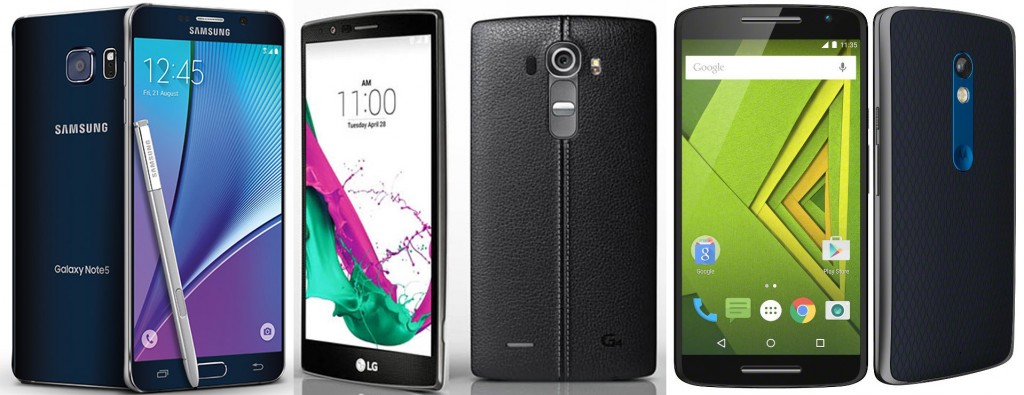Happy Friday folks. Say “cheese” to the newest wave of top quality camera phones, with two new models available in Canada, starting today.
These phones are the best money can buy, although one is surprisingly affordable. They are basically great for any cutting edge challenges mobile users will run into today. But today’s blog is about camera quality and what features make them shoot better pictures.
They are all Android-based but will likely be joined by Apple’s scheduled iPhone 6 “s” update, weeks away, with a still rumoured 16 megapixel camera, long overdue.
What makes these phone cameras so good, leaving the fancy marketing mumbo jumbo aside?
It’s not just the megapixel number. The size of the photo sensor and the quality of the lens determines the picture quality. Additionally, camera processing software, often third party, can make or break a photo, especially in poor lighting conditions.
The speed of the lens, is more about bragging rights rather than final picture quality. Unlike traditional digital camera lenses that feature adjustable apertures and shutter speeds for proper exposure, phone cameras have a fixed large open aperture. The LG G4 currently features the fastest f 1.8 aperture, while most phones range from f2- f2.8.
Here’s my take from a photographer’s perspective on this new breed of phone cameras.

Samsung Galaxy S6 Edge + 5.7” and 5.7” Galaxy Note 5 feature up to 16 megapixel rear and 5 megapixel front capability. Unlike most competitors, Samsung’s current S6 and Note 5 series take 16 MP pictures in the wide 16:9 mode, instead of the 4:3 mode. This gives you a wider picture with more information than most other 16 MP camera phones. Samsung still takes the widest angle selfies. It also has the best selection of special effect and editing features, but much of these have to be downloaded free to save you memory on Samsung’s contentious non-expandable 32GB/64GB/128GB fixed memory design. Samsung’s own Exynos processor and 4 GB of RAM make it the fastest working phone in the group. Available everywhere. Its glass front and back with smooth curved metal sides… looks like Apple built it! My shooting tests were done on the Note 5. Camera score: 8/10
UNIQUE BEST FEATURE: Samsung’s brilliant Super AMOLED Quad HD 2560×1440 screen wins hands-down on extreme angle view-ability, which helps when composing pictures from odd angles.
The LG G4 5.5” also features an exceptionally sharp 16 MP rear camera with the best manual “pro” shooting mode. Not only can you control every exposure, colour balance and ISO settings but you can also shoot in Photoshop PNG, better known as RAW format like photo enthusiasts’ cameras do. Compared to the traditional JPEG format most phones and pocket digital cameras shoot, RAW mode keeps all the picture information in each photo. It also produces a larger size file. But when opened on a PC, RAW files are like a second chance to reshoot the picture with levels of details not found in JPEG pictures. A bridal wedding dress in bright sunlight, for example, will have all white details washed out in JPEG mode, which can easily be brought back in RAW mode. Same goes for the groom’s black suit. Samsung and LG have the same widest rear camera view in 16:9 format. Camera score: 9.5/10 UNIQUE BEST FEATURE: The LG G4 is the sharpest camera for selfies (as high as 8MP) and unquestionably the sharpest 16MP pictures in this group. LG prioritized its camera over everything else on this phone.
Motorola’s Moto X Play, with 5.5” Full HD display (same 441 PPI as iPhone 6 Plus, but not as brilliant) is the most affordable quality camera phone in this grouping starting at $400 (outright) with up to 21 megapixel capacity. The slightly over-rated 21 MP format however just edges the 16 MP Samsung 6 series and Note 5 in the 4:3 format. But Samsung gains back quality in 16:9 format. It sports a huge almost two-day 3630 mAh battery, is water resistant (light rain) and with an optional TurboPower 15 charger, you get eight hours of power in 15 minutes of charging. The Moto Play is the thickest of the three, but the tapered edges and rubbery back make it the least droppable phone in the bunch. It only has 16 GB and a fixed battery but the combo SIM card slot also accommodates additional micro SD memory expansion. Available in majour carrier outlets. TELUS also throws in the TurboPower 15 charger which can akao ve used with other current Moto phones as well as any brand phone with Qualcomm Rapid charge like the Nexus 6. Camera score: 7/10 UNIQUE FEATURE: Price, at least several hundred bucks cheaper, it offers mid-tier quality but top features to belong to this group.
